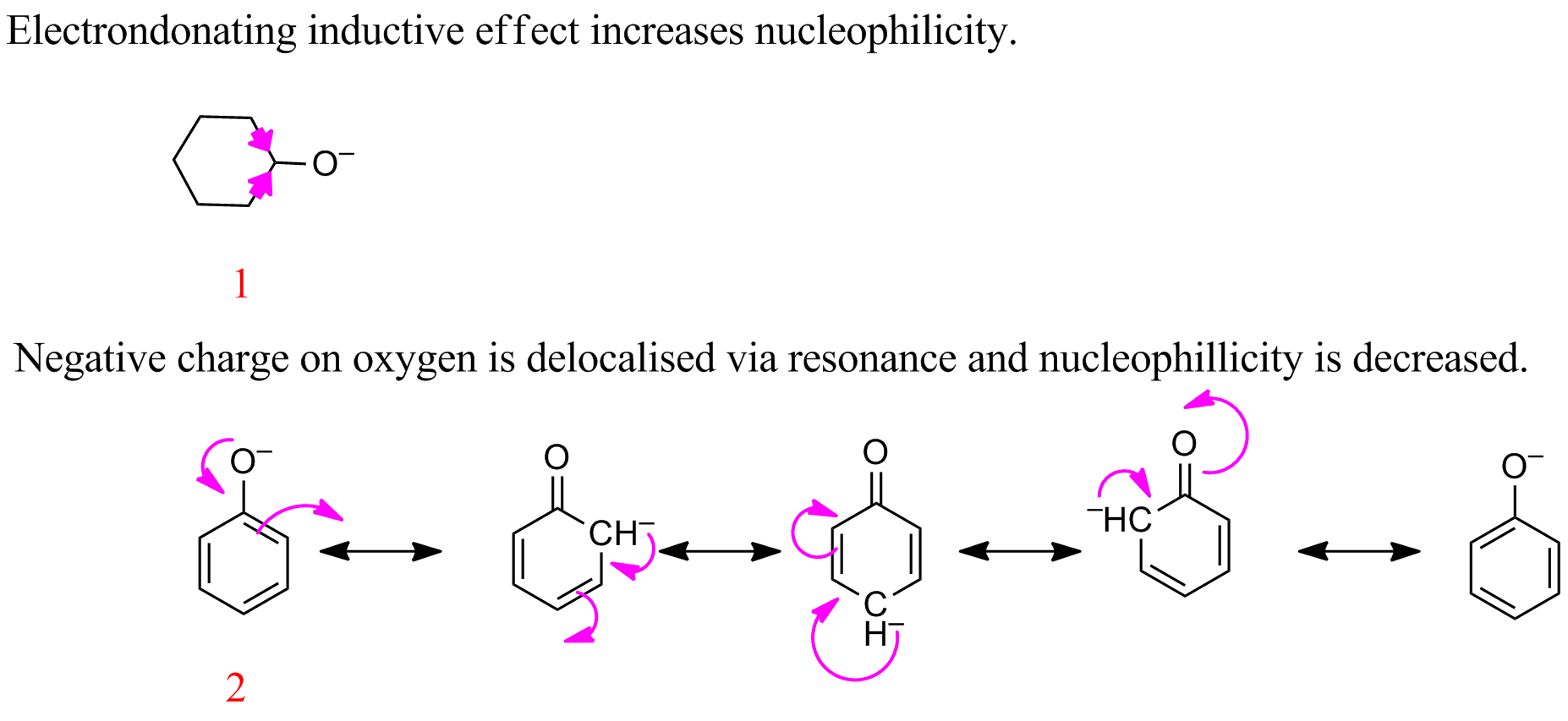The strength of a nucleophile in polar aprotic solvent is proportional to its basicity. Lone pair on O- in the molecules will donate an e- pair to an atom. I'm not sure why the alkene ring in 2 makes it a worse nucleophile compared to 1. Benzene ring is more stable than cyclohexane but the double bond is not the nucleophile in the molecule. Is it due to steric hindrance?
3 Answers
let me start with nucleophilicity of halides. In protic polar solvent, $\ce{F^-}$ is more solvated (hydrogen bonding) than $\ce{I^-}$ and hence less reactive.
In polar aprotic solvent $\ce{F^-}$ solvation is less and therefore more reactive.
Such behavior may not be applicable here, since phenoxide is resonance stabilized while other compound is not. Therefore phenoxide $\bf{2}$ is less nucleophilic than cyclohexanoate $\bf{1}$.
The negative charge is actually not all on the oxygen on for the phenolate on the right. It can be delocalized in the ring, which makes the whole molecule less basic. The negative charge is fully localized on the alcoolate on the left.
A polar aprotic solvent does not hydrogen bond to nucleophiles to a significant extent, meaning that the nucleophiles have greater freedom in solution. Under these conditions, nucleophilicity correlates well with basicity – and fluoride ion, being the most unstable of the halide ions, reacts fastest with electrophiles.


